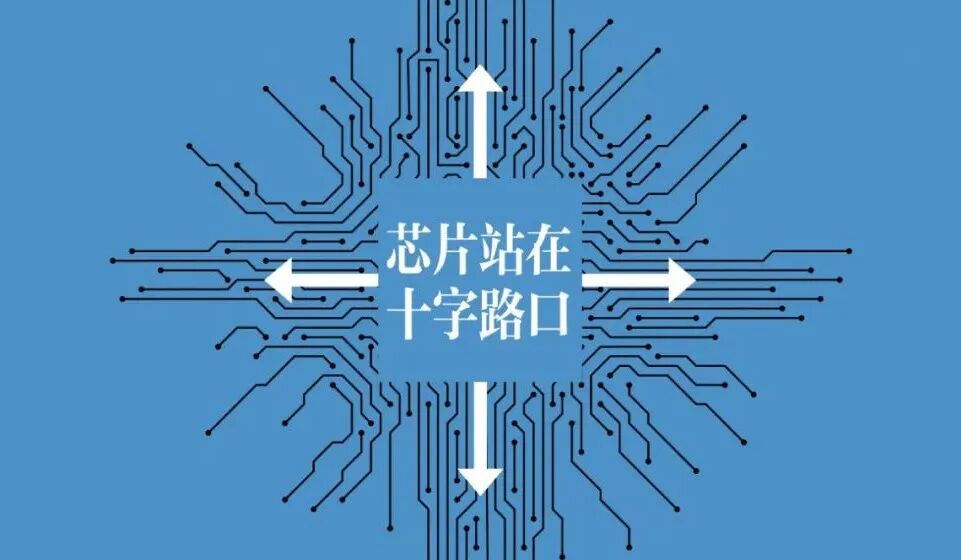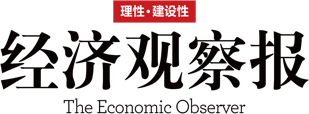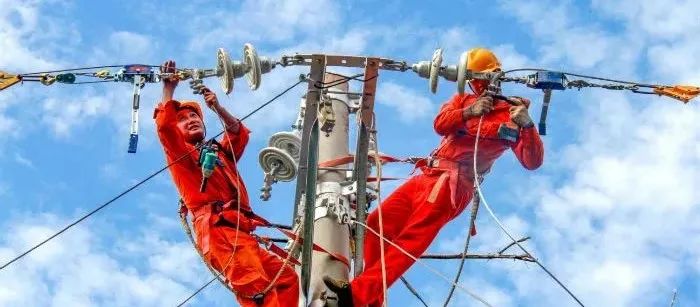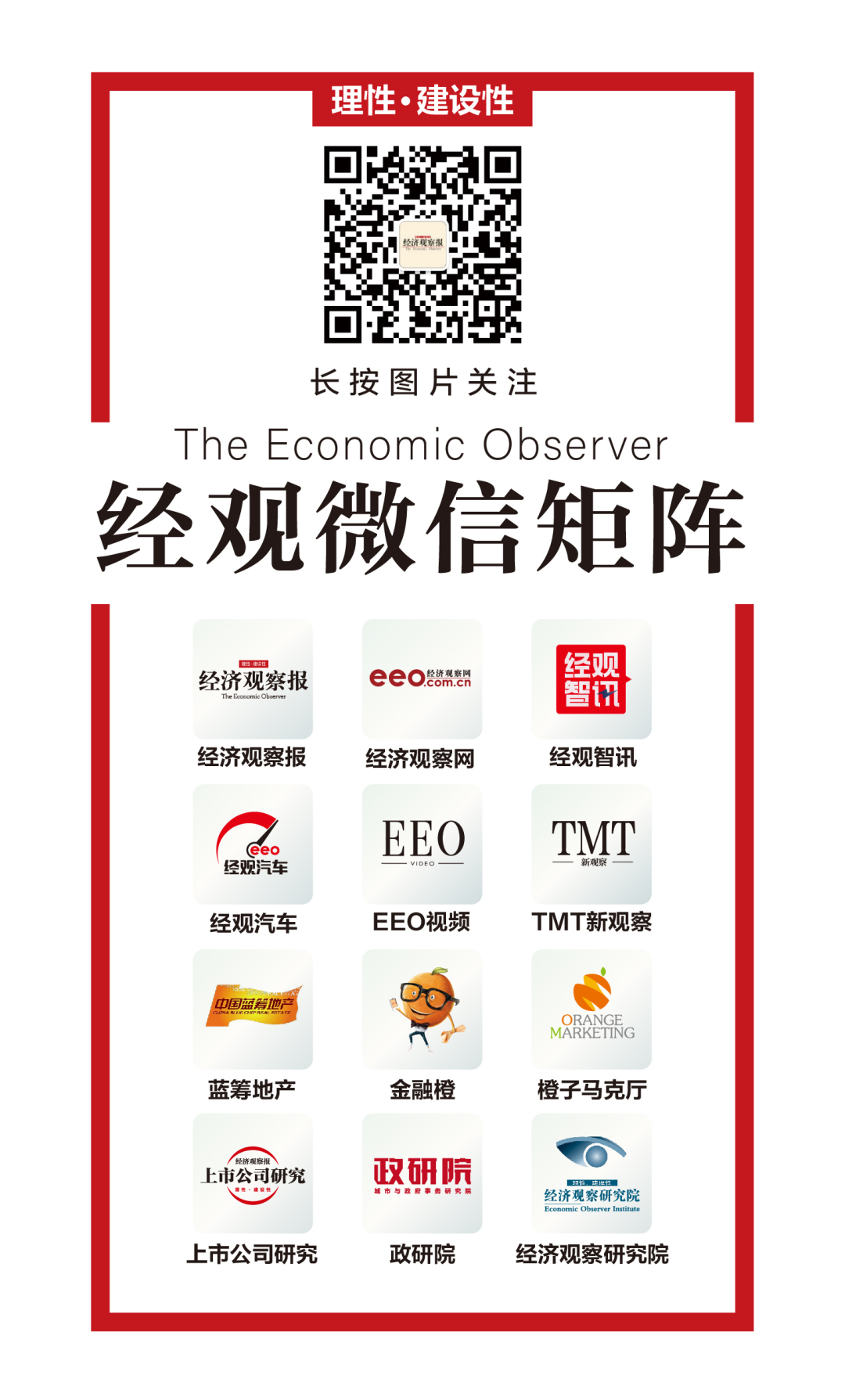
 The semiconductor industry is not only at a crossroads of globalization but also at a turning point in the industry.
The semiconductor industry is not only at a crossroads of globalization but also at a turning point in the industry.
 Author: Shen Yiran Cover Image: Tuchong Creative
Author: Shen Yiran Cover Image: Tuchong Creative

Introduction
1 || The World Semiconductor Conference was first held in 2019, coinciding with the year when global semiconductor cracks began to appear. By the time this forum was held for the fourth time in 2022, these cracks had clearly widened.2 || Gu Meng, Managing Director of Linxin Investment, believes that the semiconductor industry is at a critical juncture of strategic and cyclical overlap, exhibiting characteristics of both “ice and fire.” The strategic aspect refers to semiconductors being the cornerstone of the electronic information industry, regarded as a strategic product by various countries, while the cyclical aspect pertains to the inherent attributes of the industry.3 || In the rhythm of division and cyclical changes, seeking maximum possible cooperation remains a strategy for response.
On the afternoon of August 18, four executives from TSMC, Chen Fang, Shang Zhiyuan, Zheng Maopeng, and Su Hua, arrived at the International Expo Center in Nanjing, just a quarter of an hour before the start. The venue was packed, and despite arriving early, they seemed late.
The TSMC special forum started early, with attendees from Huawei, Vivo, local chip design companies, local investment promotion agencies, and investors, creating a crowd denser than that of the morning peak forum.
This semiconductor company, which occupies more than half of the global capacity, is in the final sprint for mass production of 3nm chips. Surrounding this company and its semiconductor supply chain is a storm of politics and business.
A week prior, the U.S. officially signed the CHIPS Act, with a total value of $280 billion, of which $52.7 billion will be used for chip subsidies to enhance domestic semiconductor manufacturing and restrict advanced processes from flowing to China.
Although the industrial policies previously introduced by Japan, Europe, and South Korea did not have such explicit exclusivity, they all emphasized the construction of domestic semiconductor manufacturing capabilities.
The glorious decade of semiconductors was a product of global cooperation, and as it approaches a market downturn cycle, it also stands at a crossroads of globalization. “We are witnessing a change in the winds of the semiconductor industry, which will harm the economy. So, at this moment, should we build high walls or leverage the winds of change to continue our work? I choose the latter,” said Miao Wand, president of the U.S. Information Technology Office (USITO).
In the past year, TSMC has supplied 12,000 different semiconductor products, which are the result of collaborative efforts from upstream and downstream partners, including numerous IP design partners and raw material suppliers. “Nothing is impossible,” said a TSMC manager when asked if they would reduce investments in China or stop cooperating with Chinese companies. “The secret to TSMC’s success has always been teamwork,” said Chen Min, Technical Director of TSMC (China) Co., Ltd., at the main forum.

Changes in the Industry Chain Division
“This conference is held against the backdrop of the U.S. CHIPS Act and the formation of the Chip4 alliance, which poses challenges to China’s semiconductor industry,” said Luo Qun, Deputy Director of the Nanjing Municipal People’s Congress Standing Committee, on August 15 during the main forum of the 2022 World Semiconductor Conference.
The World Semiconductor Conference was first held in 2019, coinciding with the year when global semiconductor cracks began to appear. By the time this forum was held for the fourth time in 2022, these cracks had clearly widened.
On August 9, 2022, the U.S. officially passed the CHIPS and Science Act, planning to provide a total of $52.7 billion in government subsidies for semiconductors over the next five years, and prohibiting companies receiving subsidies from making substantial expansions in China or other related countries for ten years. The Chip4 alliance, promoted by the U.S., aims to establish a chip alliance that includes Japan, South Korea, and Taiwan.
On February 8, the European Commission announced the much-anticipated Chip Act, planning to significantly increase the EU’s share of global chip production.
According to this act, the EU will invest over €43 billion in public and private funds to support chip production, pilot projects, and startups. Among these, €11 billion will be used to strengthen existing research, development, and innovation to ensure the deployment of advanced semiconductor tools and pilot production lines for prototyping and testing.
Miao Wand stated at the conference that most projects (national industrial policies) go beyond pure commercial purposes, as countries promote industries for national defense and security, complicating the issues.
“Our industry must recommit to open and fair competition. To make the supply chain more resilient, we must embody a spirit of mimicking supply chain resilience. We must not let insecurity, suspicion, and war obscure the path forward,” Miao Wand said.
Fangzheng Securities proposed in a research report that the advancement of chip policies in various countries signifies a change in the development tone of the global semiconductor industry: shifting from free market competition to state capital-led support.
Fangzheng Securities stated that looking back, 2010-2017 was the honeymoon period of globalization, where countries participated in the large division of labor in semiconductors based on their comparative advantages. U.S. companies did Fabless (only chip design), found foundries and packaging in Taiwan, sought memory in South Korea, and semiconductor materials and equipment in Japan, with the chips ultimately used in consumer electronics in China.
It wasn’t until 2018 that the pattern began to differentiate, forming three major camps: the U.S., China, and an independent middle force: Europe’s lithography machines, Japan’s chip materials, Taiwan’s foundries, and South Korea’s memory factories, creating a middle circulation that could serve both the U.S. and mainland China.
Fangzheng Securities stated that with the implementation of the CHIPS Act in 2022, coupled with the U.S. preparing to launch the Chip4 alliance, the industry will form a pattern of two major camps: the U.S. will complete the foundry (midstream manufacturing) and semiconductor equipment (upstream) based on Fabless, and begin internal circulation again, while mainland China will reshape an internal circulation pattern based on self-sufficient fab plants. Meanwhile, many middle circulation entities in Japan, the EU, etc., will disappear.
Yu Xiekang, Vice Chairman of the China Semiconductor Industry Association, stated that semiconductors are a typical industry of global cooperation. The semiconductor policy plans of various countries view China as a long-term strategic challenge and competitor, which goes against the consensus of fairness, openness, and non-discrimination that has formed in the global semiconductor industry over the years.
“In the current situation, the reorganization of global layouts is inevitable,” Yu Xiekang said.
A local packaging and testing factory head told the Economic Observer that in the past, the global market prioritized business, but now countries are strengthening industrial policies. The supply chain will further divide, but the concern is that the situation is not as simple as two camps, but is moving towards fragmentation.
This person stated that from the perspective of enterprises, in the past, they considered relationships with customers and partners, but now they need to consider more.
Zhao Zhanxiang, partner and CTO of Yunxiu Capital, stated that the activity of semiconductor investments decreased in the first half of this year, especially with a decline in dollar funds, and under external pressure, some dollar funds even show a trend of withdrawing from semiconductors. In terms of currency, the activity of RMB funds, especially state-backed funds, will become prominent.

“Crossroads” and “Turning Point” Overlap
At the second quarter earnings conference, TSMC President Wei Zhejia stated: “Starting in 2023, the semiconductor industry will experience a downturn cycle similar to that of 2015-2019, and customer adjustments to chip inventory will last for at least several quarters.”
Ma Weiqing, Vice President of China Resources Microelectronics, stated that June of this year is a time point worth noting, as sales continue to grow, but sales volume has declined month-on-month, breaking the long-standing trend of simultaneous increase in volume and price in semiconductors.
“When sales growth is less than sales revenue growth, it is a sign that the industry is entering a recession. The industry may enter an adjustment period, transitioning to a decline in both volume and price,” Ma Weiqing said.
The semiconductor industry is not only at a crossroads of globalization but also at a turning point in the industry.
Wang Beibei, Managing Director of Zhongxin Juyuan, believes that the cycles of semiconductors differ from those of steel and coal; high-tech cycles are more accompanied by technological iterations and innovations. The decline in consumer electronics is not only related to declining consumer confidence but is more about technological iteration. After this round of cycles, the market will be left with high-quality enterprises.
Gu Meng, Managing Director of Linxin Investment, believes that the semiconductor industry is at a critical juncture of strategic and cyclical overlap, exhibiting characteristics of both “ice and fire.” The strategic aspect refers to semiconductors being the cornerstone of the electronic information industry, regarded as a strategic product by various countries, while the cyclical aspect pertains to the inherent attributes of the industry. “Capital must discern what is fire and what is ice,” Gu Meng said.

Cooperation as a Response
China’s integrated circuit imports are still on the rise. According to data from Chinese customs, in the first half of 2022, China’s integrated circuit import volume decreased by 10.4% year-on-year, but imports increased by 5.5% year-on-year, reaching 1.35 trillion yuan, surpassing crude oil to become China’s largest import commodity.
For China, semiconductors are very important, and for semiconductors, China is also very important.
Li Ke, Vice President of CCID Consulting Co., Ltd., stated that overall, China’s market size is twice that of the U.S., and China’s production capacity (mainly mid-to-low-end capacity) is also twice that of the U.S. The U.S. restrictions focus on advanced chip cooperation, but data shows that processes below 10nm (considered advanced chips) account for only 5.9% of global semiconductor capacity.
Li Ke stated that semiconductor technology is continuously evolving, but mature chip technology has not been eliminated. Advanced technology mainly meets the needs of smartphones, but in more long-tail markets, such as automotive electronics and industrial control, there is significant room for mature chips. Therefore, mainland China can strengthen development in mature chips, solidifying specialized processes to serve more diverse, long-tail markets.
Li Ke believes that although China remains the largest importer of integrated circuits, dynamically, from the first half of 2017 to the first half of 2021, the growth rate of export value was 21.4%, far exceeding the growth rate of import value at 13.6%, which confirms the continuous growth of the industry.
The Chinese Embassy in South Korea published the full text of Ambassador Xing Haiming’s interview with South Korean Channel A TV, in which he addressed questions related to the Chip4 alliance, stating: “China is also a major global semiconductor producer and market. Excluding China from the Chip4 initiative is fundamentally misguided.” Ambassador Xing believes that China and South Korea have formed a deeply integrated industrial relationship through long-term cooperation, and both are important links in the global semiconductor supply chain, with China accounting for 60% of South Korea’s semiconductor export market.
In the rhythm of division and cyclical changes, seeking maximum possible cooperation remains a strategy for response.
The aforementioned packaging and testing factory personnel told reporters that at this time, it is crucial to strengthen communication with customers, especially end customers, to understand actual needs, strategically adjust production capacity, and gradually reduce categories with oversupply. Adjustment is a dynamic process; when end customers cut orders, the impact is more severe upstream. In the current situation, maintaining sufficient cooperation and communication is very important.
Cooperation is a past achievement of semiconductors and is also key to responding to the current changes. “The secret to TSMC’s success has always been teamwork,” Chen Min said.
From TSMC’s perspective, the flow of semiconductors downstream is undergoing structural differentiation. The supply and demand of customers in the consumer electronics industry are gradually balancing, with some entering a destocking phase, while demand in the automotive and high-performance computing sectors remains strong. The long-term structural growth of semiconductors remains robust, but the demand among different downstream sectors is undergoing a transition.
Due to the impacts of the pandemic and geopolitical factors, TSMC believes that supply chain management is becoming increasingly important. More customers are increasing supply chain flexibility through inventory methods, but they also need to strike a balance between increasing supply chain flexibility and rising costs.
“We will expand our global production layout and increase supply chain flexibility. At the same time, we will try to minimize cost increases caused by rising process complexity,” Chen Min said.


 Special Meetings, Emergency Power Supply, Millions of People in Sichuan and Chongqing Battle High Temperatures
Special Meetings, Emergency Power Supply, Millions of People in Sichuan and Chongqing Battle High Temperatures Short Selling Clouds Over Real Estate Stocks
Short Selling Clouds Over Real Estate Stocks July Economy: Unexpected Fluctuations
July Economy: Unexpected Fluctuations
